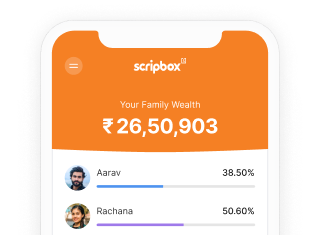Are you looking to invest ₹25 lakhs to earn a monthly income? You are not alone. This is the aspiration of many individuals who wish to earn from a passive income source and gain financial independence.
Several investment schemes in India offer a monthly income, but they vary in terms of risk, return, duration, taxability, and flexibility. Hence, when considering your investment options, take into account your risk tolerance levels, financial objectives, purpose, and tenure.
But the question is where and how to invest ₹25 lakhs for monthly income? Let us find out.
How to Invest ₹25 Lakhs for Monthly Income?
Here’s a quick snapshot of how much monthly income you could expect from different investment avenues:
| Scheme | Expected Annual Return | Expected Monthly Income (₹) |
| Debt Mutual Funds: Systematic Withdrawal Plan* | 6% | 12,500 |
| Fixed Deposits** | 6.3% | 13,125 |
| Corporate Deposits** | 7.35% | 15,312.5 |
| Post Office Monthly Income Scheme*** | 7.40% | 15,417 |
Note: The above table is for illustrative purposes only and does not constitute investment advice. The actual returns and income may vary depending on various factors such as market conditions, taxation, charges and fees.
*Mutual funds returns are subject to market risks and do not guarantee returns. With the SWP option, investors can withdraw their invested capital regularly.
**The monthly income from FD and CD is the interest generated from the principal amount. On maturity, the principal is repaid to the investor.
***POMIS offers monthly income through interest payout. However, the scheme has a maximum investment limit of ₹9 Lakhs (single account) and ₹15 Lakhs (joint account). On maturity, the principal is repaid to the investor.
Debt Mutual Funds via Systematic Withdrawal Plan (SWP)
SWPs let you withdraw a fixed amount or a percentage of your investment from a mutual fund scheme at regular intervals, such as monthly, quarterly, or annually. They suit investors who want to create a regular income stream from their existing mutual fund investments.
Here are some features of debt mutual funds:
- Returns: Not fixed; depends on the performance of the mutual fund scheme and the withdrawal date.
- Withdrawals: They are subject to capital gains tax as per the holding period and investor’s tax slab.
- Liquidity: High; you can stop or change your withdrawals.
- Best for: Investors comfortable with moderate market risk.
Fixed Deposits (FDs)
These are deposits made with banks or other financial institutions for a fixed period, earning a fixed rate of interest. Some banks offer monthly income schemes, where interest payments are made on a monthly basis.
The interest income is only for the specific duration, i.e., the FD tenure. To generate continuous monthly income, you must renew the deposit at the end of the tenure. Most banks offer auto-renewal of FDs, but the renewal will happen at the prevailing interest rates.
Here are some of the features of fixed deposits:
- Returns: The returns are fixed and do not depend on market fluctuations.
- Tenure: Flexible, 7 days to 10 years
- Taxation: Interest income is taxable. TDS is deducted if total interest exceeds ₹50,000 (₹1 lakh for senior citizens).
- Best for: They suit investors who want a guaranteed and safe return with low risk.
Note that senior citizens may get an additional 0.25% – 0.5% on FD interest rates.
Corporate Deposits
These are deposits made with companies or non-banking financial companies (NBFCs) for a fixed period of time and earn a fixed rate of interest. Similar to fixed deposits, corporate deposits earn interest only for the tenure of the deposit. At the end of their tenure, investors must reinvest in a new deposit scheme to generate a monthly income.
Here are some features of corporate deposits:
- Returns: The returns are fixed and do not depend on market fluctuations.
- Risk: The risk involved is that the company or NBFC may default on paying the interest or principal amount.
- Taxation: The interest income is taxable as per the income tax rules.
- Best for: Investors comfortable with moderate risk in exchange for better returns than bank deposits.
Post Office Monthly Income Scheme
The post office monthly income scheme (POMIS) is a government-backed scheme that offers monthly income to investors.
Here are some features of POMIS:
- Investment limits: You can open a POMIS account with any post office and deposit a minimum of ₹1,000. However, the maximum limit is ₹9 lakh for a single account or ₹15 lakh for a joint account.
- Tenure: The tenure of POMIS is 5 years.
- Interest rate: 7.40% per annum, payable monthly. At the end of the tenure, you must renew your deposit to continue earning monthly income.
- Taxation: Interest is fully taxable as per your slab.
- Liquidity: Low, premature withdrawal allowed after one year with penalties.
- Best for: Retirees or low-risk investors looking for assured returns and the safety of capital.
Conclusion
Investing ₹25 lakhs for monthly income is a major decision, and the best option depends on your risk appetite, income needs, tax situation, and financial goals. Whether you prefer the safety of a fixed deposit or the flexibility of an SWP, ensure your choice aligns with your comfort and cash flow expectations.
In most cases, diversifying across two or more options can help you balance returns, safety, and liquidity.
FAQs
No. The maximum limit is ₹9 lakh for a single account and ₹15 lakh for a joint account.
One example could be where you can split the ₹25 lakhs across low- and medium-risk options, such as bank FDs, POMIS, corporate FDs, and debt mutual fund SWPs, to earn ₹12,000-₹16,000 per month. However, this needs to be decided after accounting for your risk appetite and discussing with a qualified advisor.
No. It depends on the mutual fund’s market performance. SWPs are not fixed-income products.











Show comments